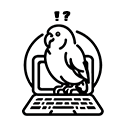Are you trying to make money blogging but feel lost? I understand. It’s tough out there – a whopping 81% of bloggers never earn more than $100 from their sites. But don’t lose hope! I’ve researched and found some solid ways to turn your blog into a real money-maker.
This guide will walk you through how to start earning from your blog, even if you’re still learning the ropes. So grab a cup of coffee, get comfy, and let’s explore these strategies together! Ready to discover your blog’s earning potential?
KEY TAKEAWAYS
• Earn commissions promoting products through affiliate networks like Amazon Associates, with rates from 2-90%.
• Write sponsored content about products while maintaining transparency and a healthy ratio of regular posts.
• Generate passive income through strategically placed display ads via networks like AdSense.
• Create and sell digital products (ebooks, courses, templates) using platforms like Podia or Gumroad.
• Monetize expertise by offering niche-related services backed by testimonials and value-based pricing.
The Myth of Easy Online Money
I’ve seen many folks fall for the “easy money online” trap. They think blogging is a quick path to riches. It’s not. Making money from a blog takes real work and time. I learned this the hard way when I started my own blog years ago. Even today
I thought I’d be rolling in cash within months. Instead, I spent countless hours writing posts that barely anyone read.
The truth is, blogging is a business. Like any business, it needs investment – not just money, but sweat and brainpower too. You have to create great content, build an audience, and find ways to make money.
It can take months or even years before you see real income. But don’t let that scare you off. With the right plan and lots of effort, you can turn your blog into a money-maker. Just don’t expect it to happen overnight.
What This Guide Covers
This guide covers the basics of making money from your blog. I’ll show you how to start even if you’re not sure what you’re doing. We’ll look at different ways to earn, like affiliate marketing and sponsored posts.
I’ll explain these terms in simple words. You’ll learn how to pick the right programs and partners for your blog.
I’ll also talk about display ads and selling your own products. These are great ways to make money while you sleep. We’ll explore how to offer services based on your skills. Plus, I’ll share some tools that make tracking your income easier.
My goal is to help you try out these methods without feeling overwhelmed.
The secret of getting ahead is getting started.
This guide is your starting point. You don’t need to be an expert to begin. I’ll walk you through each step, using clear examples. We’ll focus on practical tips you can use right away.
By the end, you’ll have a good idea of how to make your first dollar from blogging. Starting small and learning as you go is a great approach.
Step 1: Understanding Affiliate Marketing
Affiliate marketing is my go-to way to make money blogging. I promote products I love and earn a cut when people buy through my links. It’s like being a digital salesperson, but for stuff I actually use.
The best part? I can do it in my pajamas!
I’ve seen the affiliate marketing world grow huge. By 2027, it’s set to hit $27.78 billion globally. That’s a lot of zeros! Commissions vary widely, from 2% to a whopping 90%. I always look for the best deals to boost my income.
It’s not just about slapping links on my blog. I pick products that fit my niche and help my readers. That way, everyone wins.
What is Affiliate Marketing?
Affiliate marketing is my favorite way to make money blogging. I promote products I love and earn a cut when my readers buy them. It’s like being a digital salesperson, but way cooler.
I get special links from companies, share them on my blog, and ka-ching! Money rolls in when people click and buy.
I’ve seen bloggers earn anywhere from 2% to 90% in commissions. That’s a huge range! The key is picking stuff I’ve used and truly believe in. My readers trust me, so I can’t just push any old thing.
When I rave about a product I adore, it feels natural and my audience responds. Plus, it’s super easy to start. I just sign up for programs, get my links, and sprinkle them into my content.
No hard selling needed!
How Affiliate Programs Work
I love talking about affiliate programs. They’re like a secret handshake between bloggers and companies. Here’s how they work: I sign up for a program with a company I like. They give me a special link to their products.
When I share that link on my blog and someone buys through it, I get a cut of the sale. It’s that simple!
The cool part is, I can earn anywhere from 2% to 90% of the sale price. That’s a big range! I always make sure to only promote stuff I actually use and like. It keeps my readers happy and trusting me.
Plus, it feels good to share things I truly believe in.
Affiliate marketing is growing fast. Experts say it’ll be worth $27.78 billion by 2027. That’s a lot of zeros! I can mix it with other ways to make money too, like selling my own products or services.
My blog posts keep working for me even when I’m sleeping, bringing in cash from old affiliate links. It’s pretty awesome when you think about it.
Examples of Popular Affiliate Networks
Affiliate networks are key players in the blogging world. They connect bloggers like me with brands and products to promote.
- Amazon Associates: This program lets me earn up to 10% on Amazon products. It’s great for beginners due to its vast product range.
- ShareASale: I like this network for its diverse merchant base. It offers both digital and physical products with varying commission rates.
- CJ Affiliate: Formerly Commission Junction, this network has big-name brands. I can find high-paying offers here, some with $100+ per sale.
- ClickBank: For digital products, ClickBank is my go-to. It’s known for info products and often has high commission rates.
- Rakuten Marketing: This network has a mix of well-known and niche brands. I find their reporting tools very helpful.
- Awin: With over 13,000 advertisers, Awin gives me plenty of options. They also own ShareASale, expanding their reach.
- Impact: This network is growing fast. I like their user-friendly interface and diverse range of merchants.
- FlexOffers: For bloggers in specific niches, FlexOffers is great. They have over 12,000 advertisers across various industries.
Blog Monetization: Wait, You Can Actually Make Money?
Step 2: Finding the Right Affiliate Programs
I’ve learned that picking the right affiliate programs is key to making money blogging. It’s not just about joining any program that comes my way. I look for products that fit my blog’s topic and that my readers will love.
This way, I can share things I truly believe in. I’ve found that when I promote items I use and trust, my readers are more likely to buy them.
Choosing good affiliate programs takes some work, but it’s worth it. I check the commission rates, which can range from 2% to 90%. I also look at how long the cookies last and how often they pay out.
Some of my favorite programs are in networks like ShareASale and Amazon Associates. These platforms make it easy to find products and track my earnings. I always read the terms carefully to make sure I’m following the rules.
Choosing Programs That Fit Your Niche
Picking the right affiliate programs is key to making money with your blog. I look for products that match what my readers want. This way, I can share stuff they’ll actually like and buy.
It’s not about pushing random items just to make a quick buck.
I always check if the product is good before I promote it. Bad products can hurt my blog’s trust. I try out the items myself when I can. If not, I read lots of reviews from real users.
This helps me know if it’s worth sharing with my readers.
My top tip is to start small. I pick one or two programs that fit my niche well. Then, I learn how they work and how to talk about them in my posts. As I get better, I add more programs.
This slow and steady approach helps me avoid mistakes and keeps my blog authentic.
Avoiding the Sellout Trap
I’ve learned the hard way about the sellout trap. It’s tempting to grab every affiliate offer that comes my way. But that’s a big mistake. I focus on products I truly love and use.
This keeps my blog honest and my readers happy. I stick to a 4:1 ratio of regular posts to sponsored content. This balance works well for me and my audience.
Picking the right affiliate products is key. I look for items that fit my niche and help my readers. Amazon’s program is a good start, with commissions from 1% to 4.5%. But I don’t stop there.
I search for niche-specific programs with higher payouts. Building relationships with affiliate managers has opened up better deals for me. It’s all about finding that sweet spot between profit and staying true to my blog’s purpose.
Step 3: Sponsored Posts – Get Paid for What You Write
Sponsored posts are a great way to make money from my blog. I team up with brands to write about their products. They pay me for my honest reviews. It’s a win-win deal. I get paid to create content, and the brand gets exposure to my readers.
I’m picky about who I work with. I only choose products that fit my blog’s niche. This keeps my content real and useful for my audience. I always tell my readers when a post is sponsored.
Being open builds trust. The key is to make sponsored posts as helpful as my regular content. That way, everyone wins – me, the brand, and my readers.
What Are Sponsored Posts?
Sponsored posts are a cool way for bloggers to make money. I get paid to write about products or services on my blog. It’s like being a mini-celebrity endorsing stuff, but on a smaller scale.
Companies reach out to me and ask if I’d like to feature their product. If I say yes, they send me the item to try out and pay me to share my thoughts.
I always make sure to pick sponsors that fit my blog’s style. It’s important to be picky because my readers trust me. I only promote things I truly like and would use myself. This keeps my blog honest and my readers happy.
Plus, it helps me build a good rep in the blogging world.
Being open about sponsored content is key. I always tell my readers when a post is sponsored. It’s the law, and it’s just good practice. My readers appreciate the honesty, and it helps keep things clear.
Sponsored posts can be a great way to earn money while sharing cool new products with my audience. It’s a win-win when done right.
Finding Your First Sponsors
Finding sponsors can be tricky when you’re new to blogging. I’ll share some tips to help you land your first sponsorship deals.
- Build a strong online presence. Update your blog often with quality content.
- Know your audience well. Sponsors want to reach specific groups of people.
- Create a media kit. Include your blog stats, audience info, and sponsorship options.
- Network with other bloggers. They might share sponsor leads or tips.
- Reach out to brands you love. Explain how you can help promote their products.
- Join influencer networks. These platforms connect bloggers with sponsors.
- Attend industry events. Meet potential sponsors face-to-face.
- Offer value to sponsors. Show how you can boost their sales or brand awareness.
- Start small. Be open to working with lesser-known brands at first.
- Prove your worth. Share success stories from past collaborations.
Dos and Don’ts of Sponsored Content
I’ve learned a lot about sponsored content over the years. Here are some key dos and don’ts to keep in mind:
- Be upfront about sponsored posts. Tell readers when content is paid for. This builds trust with your audience.
- Keep it relevant to your niche. Only work with brands that fit your blog’s focus. Your readers will appreciate content that makes sense for your site.
- Maintain your voice and style. Don’t let sponsors dictate how you write. Stay true to your usual tone.
- Provide real value to readers. Focus on helpful info, not just product plugs. Aim for a 4:1 ratio of regular to sponsored posts.
- Set clear expectations with sponsors. Agree on deliverables, deadlines, and payment terms upfront. This avoids issues later.
- Disclose payment details. Let readers know if you got free products or cash for the post. It’s the law in many places.
- Don’t accept every offer. Say no to brands that don’t align with your values. Quality matters more than quantity.
- Avoid hard selling. Readers will tune out pushy sales pitches. Keep the tone natural and informative.
- Don’t copy sponsor-provided text word-for-word. Put things in your own words to keep your unique voice.
- Don’t promise results you can’t deliver. Be realistic about the impact of sponsored posts. Honesty is key.

Call to action 1
Consider using this if you need to provide more context on why you do what you do.
Step 4: Display Ads – Passive Income Made Easy
Display ads can be a great way to make money while you sleep. I’ve used them on my blog for years. They’re simple to set up and don’t need much work after that. You just place ad codes on your site, and advertisers show their ads to your readers.
Each time someone views or clicks an ad, you earn a little cash.
Getting started with display ads is pretty easy. Ad networks like Google AdSense are popular choices for beginners. They handle finding advertisers and managing payments for you. To join, you’ll need a site with some traffic and original content.
Once approved, you can add ad code to your blog posts and sidebars. The network takes care of the rest.
Setting up ads takes some thought. You want them to be seen, but not annoy your readers. I’ve found that ads work well between paragraphs or in the sidebar. But too many ads can make your site look spammy.
It’s best to start small and test different spots. Over time, you’ll learn what works for your blog and readers. With the right setup, display ads can bring in steady income without much effort on your part.
Overview of Display Advertising
Display ads are a classic way to make money from your blog. I’ve used them on my sites for years and they’re pretty straightforward. You simply put ad spaces on your blog, and advertisers pay to show their ads there.
It’s kind of like renting out billboards on your website. You can join ad networks like Google AdSense or sell ad space directly to companies. The cool part? Once you set it up, you can earn money while you catch some Z’s.
Through trial and error, I’ve found that display ads work best when you have lots of traffic. More eyeballs mean more ad views and clicks. But here’s the rub – too many ads can really bug your readers.
I always try to strike a balance between making money and keeping my site looking clean. It’s not always easy, but with some tweaking, you can find what clicks for your blog and your audience.
Getting Started with Ad Networks
I started my journey with ad networks by signing up for Google AdSense. It’s free and easy to join. I just filled out a form, added some code to my blog, and waited for approval. Once approved, I could choose where to place ads on my site.
I picked spots that didn’t annoy my readers but still got views.
Other networks like Media.net work similarly. They offer different ad types and payment terms. I found that mixing networks can boost earnings. But I’m careful not to overdo it. Too many ads can drive readers away.
I aim for a balance between income and user experience. It takes some trial and error, but it’s worth it to find what works best for my blog.
Setting Up Ads on Your Blog
Setting up ads on your blog is easier than you might think. I’ll walk you through the process step by step.
- Pick an ad network like Google AdSense for a simple start.
- Sign up for the ad network and wait for approval.
- Get the code snippets from your chosen ad network.
- Add these code snippets to your blog’s HTML.
- Place ads where they fit best on your blog layout.
- Test different ad spots to see what works best.
- Keep an eye on how your ads are doing.
- Tweak ad placement to make more money without annoying readers.
- Focus on growing your blog traffic to boost ad income.
- Be patient as it may take time to see good results.
Building Trust in Affiliate Marketing… or at Least Faking It
Step 5: Selling Digital Products
I love selling digital products on my blog. It’s a great way to make money without shipping stuff. I create ebooks and video courses about my blog topics. These products let me share my knowledge and earn cash at the same time.
The best part? I keep all the profits!
Making digital products takes work, but it’s worth it. I spend about 20 hours a week on my blog and products. That time pays off when people buy my stuff. I use social media and my email list to tell folks about new products.
It works well to grow my blog and sales. Plus, I can help more people with my expertise this way.
Types of Digital Products to Create
Digital products are a great way to make money from your blog. I’ve tried several types and found some real winners.
- Ebooks: I wrote a short guide on my niche topic and sold it as a PDF. It was easy to create and brings in passive income.
- Online courses: I made a video series teaching my blogging skills. Platforms like Teachable make hosting and selling courses simple.
- Templates: I offer customizable blog post templates. These save my readers time and help them create better content.
- Printables: My meal planning sheets are popular with my food blog readers. They’re quick to make and easy to sell.
- Stock photos: I sell my travel photos to other bloggers. It’s a fun way to monetize my photography hobby.
- Presets: I created Lightroom presets for editing photos. They sell well to my Instagram-focused audience.
- Worksheets: My goal-setting worksheets help readers take action. They’re simple to make in programs like Canva.
- Audio guides: I recorded walking tours for my travel blog. They’re unique products that my readers love.
- Digital planners: My productivity planner works great on tablets. It’s a high-value item that sells for a good price.
- Resource libraries: I bundle my best content into a paid membership area. It gives extra value to my most loyal readers.
Platforms for Selling Your Products
I’ve tried many platforms to sell my digital goods. Here are some great options I’ve found for bloggers just starting out:
- Podia: This is my top pick for beginners. It’s an all-in-one platform that lets you blog and sell products. Their starter plan is only $4 a month and includes a custom domain.
- Gumroad: I love how easy it is to use. You can start selling digital products in minutes with no upfront costs.
- Teachable: This works well if you want to create and sell online courses. They handle payments and course delivery.
- SendOwl: It’s great for selling downloadable products like ebooks or templates. They offer features like secure file hosting and affiliate tools.
- WooCommerce: If you have a WordPress site, this plugin turns it into an online store. It’s free to use but may need some tech skills to set up.
- Etsy: While known for handmade goods, Etsy also allows digital product sales. It’s a good choice if you make printables or graphics.
- Payhip: I like their simple setup and low fees. They’re ideal for selling ebooks, courses, or memberships.
- E-junkie: This platform has been around for years. It’s basic but works well for selling digital downloads.
- DPD: Short for Digital Product Delivery, DPD is made just for selling digital goods. They offer features like PDF stamping and license key generation.
- Sellfy: This platform is built for creators. You can sell digital products, print-on-demand items, and even subscriptions.
Affiliate Programs: Sign Up First, Read the Fine Print Later
Step 6: Offering Services and Freelancing
I’ve found a great way to make money with my blog. I offer services like travel planning and graphic design. It’s fun and shows off what I know. I pick a special area to focus on. This helps me find people who want my help.
I make sure my website looks good and professional. It’s key to getting clients.
I talk to other pros in my field. This builds trust and helps me find work. I create packages that show the value of what I do. I use stories from happy clients to prove I’m good at my job.
These stories help new clients trust me. It’s a smart way to grow my business and make money from my blog.
Identifying Your Service Offerings
I can offer services based on my skills as a blogger. My expertise might be in writing, design, or a specific niche topic. For example, if I run a travel blog, I could offer trip planning services.
If I’m good at graphic design, I could make logos or social media images for other bloggers. It’s smart to think about what I’m really good at and what people often ask me for help with.
These clues can point to services I could sell.
I need to be clear about what I’m offering and how much it costs. I can start by listing my skills and the tasks I enjoy doing. Then, I can research what others charge for similar services.
It’s okay to start with lower prices as I build my portfolio. As I gain more clients and experience, I can raise my rates. The key is to offer something valuable that fits my blog’s theme and my readers’ needs.
How to Get Your First Clients
Getting your first clients as a new blogger can feel tough. But don’t worry, I’ve got some tips to help you start strong.
- Reach out to friends and family businesses. They might need your help and trust you already.
- Contact Etsy sellers. Many small business owners need blog content to boost their sales.
- Make a media kit. Show off your blog stats and what you can offer to potential clients.
- Keep your blog clean and easy to use. A neat site will attract more clients.
- Run fun giveaways. They can help grow your audience and catch clients’ eyes.
- Send personal emails to brands you love. Tell them why you’d be great to work with.
- Join blogger groups on Facebook. You might find job leads or tips from other bloggers.
- Offer free work at first. It can lead to paid gigs once you prove your skills.
- Learn web stuff like WordPress. Clients often want bloggers who know tech basics.
- Save money for slow times. Freelance work can be up and down, so be ready.
- Keep looking for new clients. Even when you’re busy, don’t stop marketing yourself.
- Be honest about your blog size. New bloggers can still offer value to clients.
Step 7: Essential Tools for Monetization
I’ve found some great tools to help track my blog’s money-making efforts. For affiliate income, I use a simple spreadsheet to log my sales and commissions. It’s not fancy, but it works well for me.
To keep an eye on my blog’s overall health, I rely on Google Analytics. This free tool shows me how many people visit my site and which posts they like best.
I also use a link shortener to make my affiliate links look nicer and easier to track. Bit.ly is my go-to for this. It’s free and simple to use. For managing my ads, I started with Google AdSense.
It’s easy to set up and doesn’t need a ton of traffic to get started. As my blog grows, I plan to look into other ad networks that might pay more. These tools help me stay on top of my blog’s income without getting too confused.
Tools for Tracking Affiliate Income
Tracking affiliate income can be tricky. Here are some tools that make it easier:
- Google Analytics: This free tool helps track website traffic and sales. It shows which links bring in the most clicks and money.
- Pretty Links: This plugin hides ugly affiliate links. It also tracks clicks on your links.
- Affiliate WP: This tool manages all your affiliate programs in one place. It works well for WordPress blogs.
- ShareASale: This network offers detailed reports on your earnings. You can see which products sell best.
- Lasso: This plugin finds and displays your affiliate links. It also shows how much you’ve earned from each link.
- Skimlinks: This tool turns normal links into affiliate links. It tracks all your affiliate income in one dashboard.
- Genius Link: This creates smart links that work in any country. It tracks clicks and sales across the globe.
- ClickMeter: This tool tracks clicks on all your links. It shows which social media posts bring in the most sales.
- Affilimate: This dashboard combines data from many affiliate networks. You can see all your income in one place.
- ThirstyAffiliates: This plugin cloaks and manages your affiliate links. It also provides detailed click reports.
Analytics and Performance Management
I’ve learned a lot about tracking blog performance. Let’s look at some key tools and methods for analytics and performance management.
- Google Analytics is a must-have for bloggers. It’s free and shows your traffic sources, popular posts, and visitor behavior.
- Platform dashboards offer quick insights. Many blogging platforms have built-in stats that are easy to check daily.
- Tracking affiliate sales is crucial. Tools like Post Affiliate Pro help you see which links are earning money.
- Ad revenue needs close watching. I check my ad network’s dashboard to see which ads perform best on my site.
- Email list growth is a key metric. I use my email service provider’s stats to track new subscribers and open rates.
- Social media analytics matter too. Each platform has its own insights to show post reach and engagement.
- Content calendars keep me on track. I use one to plan posts and track how often I’m publishing.
- Reader feedback is valuable data. I pay attention to comments and emails to gauge what content resonates.
- Traffic growth is a top priority. I set monthly goals and use Google Analytics to see if I’m hitting them.
- Conversion rates tell me a lot. I track how many visitors take action, like signing up or buying something.
- Page load speed affects performance. I use tools to check my site speed and make improvements.
- Bounce rate shows if visitors stick around. A high bounce rate might mean I need to work on my content quality.
- Time on page indicates reader interest. Longer times usually mean more engaging content.
- Mobile vs desktop traffic is important. I make sure my site works well on both to keep all readers happy.
- Search rankings affect traffic. I track my positions for key terms to guide my SEO efforts.
Conclusion: Start Experimenting with Monetization
Making money from blogging isn’t magic. It takes work and time. But don’t let that scare you! Try different ways to earn. Maybe start with ads or affiliate links. Then move on to digital products or services.
Keep learning and testing new ideas. Your blog can grow into a real income source. Just take that first step and see where it leads you!
Recap of Strategies
I’ve tried many ways to make money from my blog. Ads, affiliate links, and sponsored posts are my top picks. I put ads on my site and earn when people see or click them. With affiliate links, I get a cut when readers buy stuff I recommend.
Sponsored posts pay me to write about products. These methods work well together. I’ve found that mixing them up keeps my income steady.
Creating my own products has been a game-changer. I sell e-books and online courses about blogging. It’s hard work, but the payoff is worth it. I control the whole process and keep more of the profit.
Plus, it’s fun to share what I’ve learned with others. My readers seem to like having something made just for them.
Encouragement to Explore Different Methods
I’ve tried many ways to make money from my blog. Each method has its own perks. Affiliate marketing lets me earn commissions by promoting products I love. Sponsored posts give me a chance to work with brands and get paid for my writing.
Display ads offer a steady stream of income without much effort on my part.
Creating digital products has been a game-changer for me. I made an ebook about blogging tips, and it’s been selling well. It took some time to make, but now it earns money even when I’m not working.
I also started offering freelance writing services to my readers. This has led to some great clients and extra income.
Don’t be afraid to try different ways to monetize your blog. What works for one blogger might not work for another. I found success by mixing various methods. Start small and test things out.
You might be surprised by what clicks with your audience and brings in the most money. Keep learning and adjusting your approach as you go.
Next Steps for Deeper Learning
I want to grow my blog income. You might feel the same way. Let’s take some steps to learn more. We can join online courses about blogging. They teach new ways to make money. We can also read books by successful bloggers.
Their stories give us ideas and hope. Talking to other bloggers helps too. We can share tips and learn from each other’s wins and mistakes.
I like to try new things on my blog. It’s fun to test different money-making methods. Sometimes they work, sometimes they don’t. But I always learn something new. We can start small and build up.
Maybe we sell one product or join one affiliate program. Then we can add more as we go. The key is to keep learning and trying.
FAQs
1. How can I start making money from my blog?
You can make money blogging through many ways. Try affiliate marketing, display ads, or selling digital products. Affiliate programs like Amazon Associates let you earn from product links. Ad networks such as Google AdSense or Mediavine pay for showing ads. You could also create and sell ebooks, courses, or printables.
2. When should I start trying to monetize my blog?
There’s no set time to start monetizing. Focus on building an audience first. Create good content and grow your readership. Once you have steady traffic, look into income streams. Start with easy options like affiliate links or display ads. As you learn more, try advanced methods like sponsored posts or digital products.
3. What are some high-paying affiliate programs for bloggers?
Many affiliate networks offer good pay. Look into ShareASale, CJ Affiliate, or Awin. These have programs for various niches. Amazon Associates works well for most blogs. Niche-specific programs often pay more. Research options in your blog’s topic area. Remember to disclose affiliate links to your readers.
4. How do I create digital products to sell on my blog?
Start with what you know best. Turn your expertise into ebooks, courses, or printables. Use tools like Canva for design work. Price your products based on value and market rates. Promote them through your blog posts, email list, and social media. Test different product types to see what sells best with your audience.
5. What’s the best way to get sponsored post opportunities?
Build your blog’s credibility first. Create a media kit showing your stats and audience. Reach out to brands that fit your niche. Join influencer networks to find opportunities. Set fair rates based on your reach and engagement. Always disclose sponsored content to maintain trust with readers.
6. How can I optimize my blog for search engines and increase traffic?
Do keyword research to find topics people search for. Use these keywords in your content, titles, and headings. Create high-quality, in-depth posts that answer reader questions. Build links from other sites to boost your authority. Improve your site speed and mobile-friendliness. Use clear, descriptive URLs. Remember, good content that helps readers is key for both search engines and humans.





